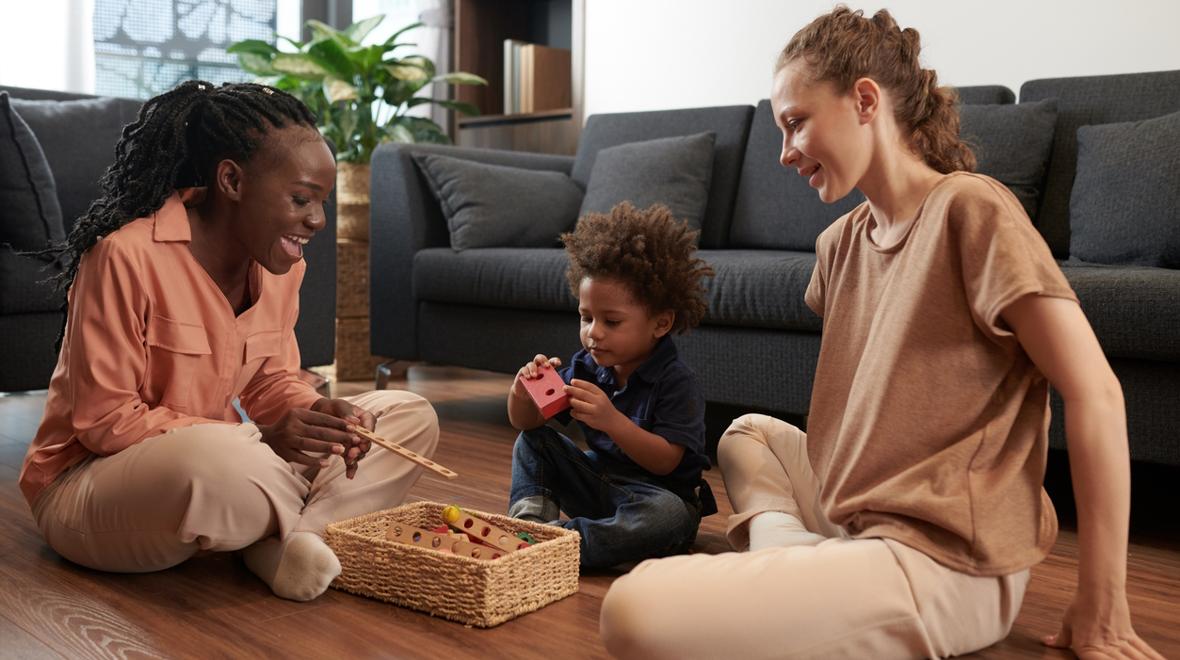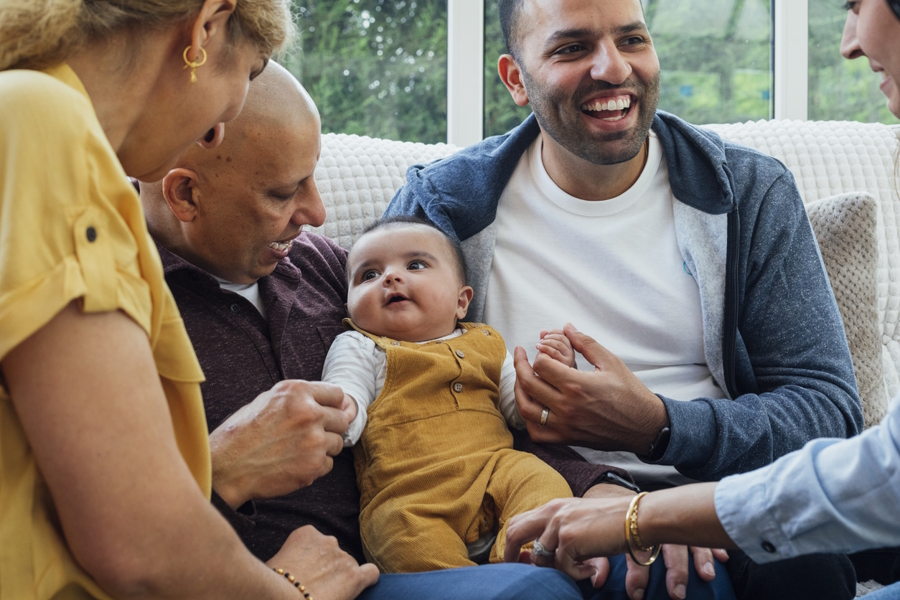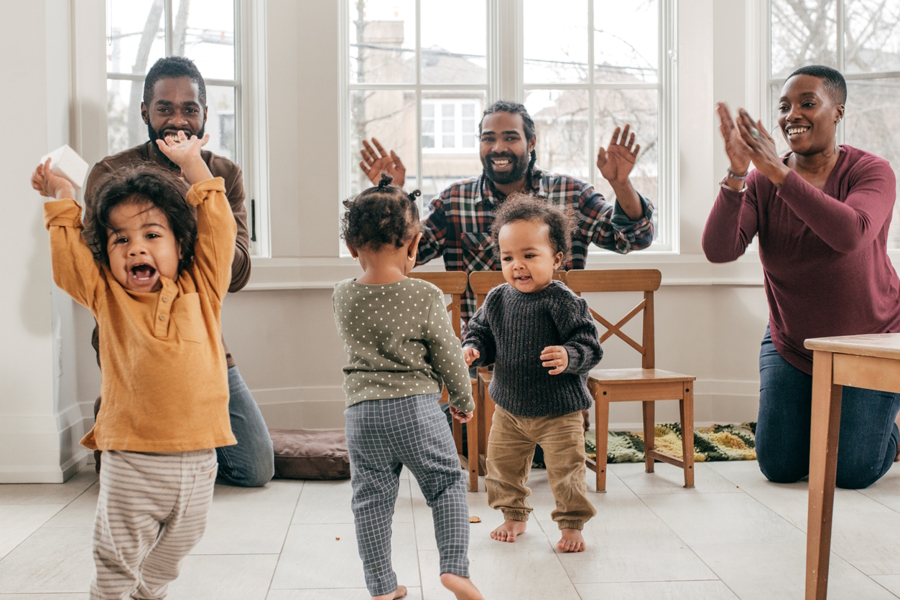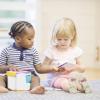
Photo:
iStock
Editor’s note: This article was written by Amelia Bachleda, Ph.D., a child development specialist at University of Washington’s Institute for Learning & Brain Sciences.
Research conducted by the University of Washington’s Institute for Learning & Brain Sciences (I-LABS) and other child development experts tells us that one of the best ways to support children’s learning is through meaningful everyday interactions. The following research-based tips won’t tell you how to teach the ABCs or 123s, but they will help children build foundational skills for a lifetime of learning and discovery.
Play it out
Play is a powerful vehicle for learning. Play allows children to focus on exploring tasks and ideas that are meaningful to them. This focus helps children test new ideas, solve problems, and push the limits of their physical and social skills. We can help children reap all the benefits that play has to offer in three key ways:
- Protect children’s free time. Time to play exactly as they please is essential to children’s learning and development. Ensure that children do not have so many scheduled activities that they no longer have time for free play.
- Play along. While independent free play is important, adults can help boost children’s learning by playing along. Follow their lead as you ask questions or make suggestions to stretch their thinking. For example: “I love the tower you are building. What could we do to make it even taller?” Open-ended questions that ask children to respond with more than a “yes” or “no” build their problem-solving and critical thinking skills. Check out these activities for more fun ways to play together.
- Increase the challenge. Structured play, like board games or other games with rules, are great tools to help children build important life skills. For example, board games help older children flex problem-solving skills and build key social skills like taking turns and sharing. Games like “Simon Says” and “Red Light, Green Light” are wonderful for building executive function skills. Executive functions are a suite of skills that includes attention and focus, impulse control, flexible thinking, and memory. Finding opportunities to build these skills is just as important as helping children learn academic topics. In fact, research suggests that children’s executive function skills in kindergarten predict academic performance across all subjects in later years.
Practice makes progress
When we learn something new, we either develop or strengthen neural pathways in our brains. This means that as we learn, we are physically changing our brains. The more often we do something, the stronger the neural pathways become and the better we are at that task or skill. Children, especially very young children, have an incredible capacity to learn new things. Scientists estimate that between birth and age 3, children’s brains make 1 million new neural connections every second. This period of rapid brain growth and development is the best time for kids to learn foundational skills, such as language. For example, children at this age are quite capable of learning more than one language quickly and distinctly.

While we can and do learn throughout our lives, our brains will never be as flexible and open to new experiences as they were when we were children. To support this period of growth and development, give children plenty of opportunities to practice their new skills in ways that are meaningful to them. Again and again and again. Remember: No one is perfect, and perfection shouldn’t be the goal. Instead, encourage children’s natural love of learning and exploration by providing them with settings that are meaningful and exciting to them. This will give them the tools they need to build new skills over the course of their lives.
Make it social
From babies learning their first words to grandparents playing a new game with friends, we all learn best in social settings. There is something magical about social learning, and that is especially true for young children. For babies, back-and-forth social exchanges cue their brain to pay close attention. Research shows that babies can learn and imitate language sounds during even short periods of exchanges with their caregivers. Children are also more motivated and focused when they feel like they are part of a team or a group. This can be an especially powerful strategy for educators to use to build confidence in STEM subjects (science, technology, engineering and math). For example, to create camaraderie, teachers might say, “Hello, mathematicians! Today we are working on some puzzles together.”
Explore together
Children are curious — super curious — but parents already know that. Parents also won’t be surprised to learn that toddlers ask over 100 questions per hour. While it probably isn’t possible (or reasonable) to answer all those questions, listening to and building on a child’s innate curiosity is an important way to support learning. Having all the answers is not what matters most. Instead, modeling curiosity and exploration will help children build lifelong problem-solving skills.
It will also not be news to you that children are creative. So creative that research shows children are even better at solving certain types of puzzles and problems than adults. One of the main reasons is that children haven’t learned as many “rules” about how the world works; in their minds, almost anything is possible. As we grow and learn more about the world, we develop a better understanding of how things work, and we become better at navigating life. But in the rush of our everyday lives, it is easy to be disconnected from the creativity we tapped into as children.
Encouraging children’s curiosity and creativity from an early age will help them integrate these skills into their daily lives. Play along with children and try giving them some creativity prompts. For example, “How many different things do you think this pencil could be? I think it could be a magic wand! What else do you think it could be?” Who knows, playing together just might help boost your creativity, too.
Conversation is key
You have probably heard that it is important to talk (a lot) to babies. And while this is true, new research tells us that it is not only what you say, but how you say it, that matters. In a recent study from I-LABS, researchers found that the number of back-and-forth “conversations” between 6-month-old babies and their parents was a better predictor of brain maturity at 2 years old than the number of words children heard. In other words, our conversations with children, even before they are using words, help build and strengthen key language areas in the brain.
Another key to helping young children learn language? Speaking “parentese” — the singsong speech we tend to use with babies. Often confused with baby talk, parentese uses real words and correct grammar, but has several features that support language learning, including variations in pitch, word repetition and a slower pace. These elements make it easier for children to discern the patterns, rhythms and sounds of language. Although parentese is often associated with female caregivers, research shows that men use this type of speech, too, and that is a very good thing. The more parentese that children hear as babies, the larger their vocabularies are as toddlers.

Do as I do
From a young age, children are looking to adults to learn how to interact with and respond to the world around them. Many children can imitate simple facial expressions within hours of birth, and their capacity to imitate and learn from our actions grows from there. As busy adults, it can be easy for us to forget just how much children learn from watching us and what a powerful learning tool modeling is.
Research shows that children even learn key problem-solving skills like persistence from modeling, watching adults try, try, try again before ultimately succeeding. Let this be your official permission to make mistakes in front of the children in your care. Spilled the milk? Wonderful! Talk through how you are going to solve the problem together. Frustrated because you can’t figure something out? Even better! Share your thought process with your children. Lost your temper? It happens to everyone, and it is a great opportunity to talk through how you were feeling at that moment.
Children also have a sophisticated ability to read our emotions, and they pay close attention to how we interact with other people. For example, research from I-LABS shows that young children learn biased behaviors from adults just by watching them. Keep this in mind as you move through the world and interact with your community. We all have biases and are bound to make mistakes. When we do, don’t be afraid to talk about what happened and what you would do differently next time.
Dance to the beat
It is almost impossible not to sing or dance when we hear our favorite song. Music is central to our lives. Humming to and rocking babies come naturally to us, and almost as soon as they can move, babies are bouncing and wiggling to the beat. But music is more than simply comfort. Research shows that listening and moving to music helps babies recognize the rhythms and patterns of language, too. For older children, moving together in harmony can even boost their ability to collaborate and solve problems together. So, look for opportunities to listen to music and move together. The type of music does not matter — no one genre is better than another. Pick some music that you love and enjoy moving and grooving with the ones you love most.
For more fun ideas and hundreds of free research-based resources, visit the I-LABS Training and Resource Library.

More helpful resources for parents of young kids: |
Editor’s note: This article was originally published in 2023 and was most recently updated in December 2024 by ParentMap's associate editor, Kari Hanson, including a fact-check and additional resources.









